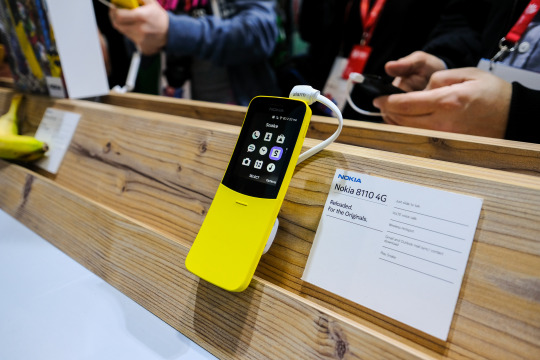#5G Appeal
Explore tagged Tumblr posts
Text
Is the spiritual person a conspiracy theorist? A list of red flags
They talk about a shadowy group of people supposedly manipulating everything behind the scenes. They might refer to them by terms such as globalists, bankers, international bankers, secret rulers of the world, the elite, the cabal, Kabbalists, Talmudists, satanists, satanic pedophiles, pedophiles, generational satanists, satanic bloodlines, the Illuminati, the Babylonian Brotherhood, lizard people, Reptilians, Orions, regressives, regressive entities, Khazarians, Marxists, cultural Marxists, or leftists. Sometimes, very rarely, they'll just come right out and say "Jews."
They claim that the conspiracy has been working to conceal historical and spiritual truths from humanity.
They claim that the conspiracy uses stuff like food, entertainment, and medicine to control the masses. For example, "additives in food suppress our psychic abilities" or "Hollywood films contain subliminal messages" or "COVID vaccines were actually created to alter your DNA to make you more docile."
Also, claims that the conspiracy controls people via spiritual or technological implants, 5G, or alter programming, with or without explicit mention of Project Monarch (a conspiracy theory promoted by far right cranks such as Mark Philips and Fritz Springmeier, who used hypnosis to respectively convince Cathy O'Brien and Cisco Wheeler that they'd been put under mind control by a global satanic conspiracy).
They claim that this conspiracy is controlling the media, has fingers in every institution they disagree with, and is generally behind everything they disagree with. (EG, the conspiracy created the Catholic Church; that other New Ager they disagree with is actually controlled opposition, etc.)
They claim that the conspiracy is trying to keep people in fear.
They claim that the conspiracy harvests something from people. Blood and adrenochrome are common ones. Loosh is somewhat less common. Expect to see something else pop up eventually.
They claim that the conspiracy practices genetic engineering; EG, creating animal/human hybrids, using vaccines to genetically sever people's connection to God, etc.
They claim that true spiritual wisdom can be traced back to places like Atlantis, Lemuria, or Mu.
They claim that world governments have secretly been in contact with extraterrestrials for years.
They appeal to known frauds and cranks, including but not limited to Erich Von Daniken, Zechariah Sitchin, David Icke, David Wilcock, Graham Hancock, Jaime Maussan, Bob Lazar, Steven Greer, Richard C. Hoagland, Fritz Springmeier, and Drunvalo Melchizedek.
Appeals to forged documents, including but not limited to the alleged diary of Admiral Richard Byrd, The Emerald Tablets of Thoth the Atlantean, and The Urantia Book.
Appeals to channeled information, such as that provided by Edgar Cayce, Carla Rueckert, or George Van Tassel.
"But all of this has to come from somewhere, doesn't it?"
Oh, it all comes from somewhere, all right, but the where isn't what most people imagine.
A lot of the stuff above is just a modern spin on the content of The Protocols of the Learned Elders of Zion, a Russian hoax created to justify violence against Russian Jews. The Protocols itself was plagiarized from a political satire and incorporated a lot of the post-French Revolution conspiracy theories about Freemasons and Jews being behind the French Revolution. I wrote a summary of the conspiracy tropes found in The Protocols over here.
The stuff about Satanic sacrifices and the consumption of blood, adrenochrome, loosh, or whatever are simply just variations on blood libel, an antisemitic conspiracy theory that claims Jews practice ritual cannibalism. Blood libel can be traced back to ancient Greece. (With the Greek version, I really can't help but notice the similarity to modern urban legends of gangsters kidnapping random people for initiation rituals.)
Many of these tropes can also be linked back to the early modern witch hunts. It was believed that witches sacrificed babies to Satan, practiced cannibalism, and put people under mind control by way of diabolical magic. It was also believed that some witches didn't even know they were witches; they'd go off to attend the Devil's Sabbath at night and come back in the morning without remembering a thing. In the late 20th century, this witch hunter's canard would be reinvented as the alter programming conspiracy theory when media such as the 1973 book Sibyl and its 1976 television adaptation put DID (note: the woman who inspired Sibyl did not have DID) into the public consciousness. For a more complete list of witch panic and blood libel tropes, I wrote a list over here.
Lemuria was a hypothetical landmass proposed to explain the presence of lemur fossils in Madagascar and India while being absent in continental Africa and the rest of Asia, because if lemurs evolved naturally, they wouldn't be in two separate places with no connection to each other. The discovery that India and Madagascar were once connected not only made the hypothesis obsolete, it precludes the existence of Lemuria.
The whole notion of Mu began with a horrendous mistranslation of the Troano manuscript. A man named Augustus Le Plongeon would link the mistranslation with the story of Atlantis, and use it to claim that Atlantis actually existed in the Americas. (For Plongeon, Mu and Atlantis were one and the same.) And then other people (like James Churchward) got their hands on the whole Mu thing, and put their own spins on it, and the rest is history.
Le Plongeon's ideas influence modern Atlantis mythology today; EG, the idea that it was in the Americas. Another guy who helped shape the modern Atlantis myth was Ignatius L. Donnelly, an American politician. Dude claimed that Atlanteans spread their oh-so-superior culture far and wide. He also claimed that Atlantis was the home of the Aryan people, because of course he did.
The idea that all of the world's wisdom can be traced back to Thoth/Hermes goes back to Hermeticism, a product of Greco-Egyptian syncretism. Hermeticism produced a fascinating body of mythology and an interesting way to consider the divine and its role in shaping human history, but that doesn't mean it was right. And the Emerald Tablets of Thoth the Atlantean is a modern text that has fuck-all to do with ancient Hermeticism and more to do with HP Lovecraft.
This idea that the conspiracy uses pharmaceutical drugs and vaccines for evil also has roots in Nazi Germany. The Nazi government, wanting to reserve real medicine for their soldiers, told the general populace that said medicine was the product of evil Jewish science and prescribed alternative healing modalities instead. (Said alternative healing modalities did not particularly work.) It also echoes the old conspiracy theories about Jews spreading the Black Death by poisoning wells.
The idea that the conspiracy uses genetic manipulation to create subhuman beings or sever humanity from the divine is a permutation of the Nazi conspiracy theory that Jews are trying to destroy the white race through race mixing. The idea of evil reptilian DNA goes back to the ancient serpent seed doctrine, which is indeed old, but no less pure hateful nonsense for it.
"But there's got to be somebody up to something rotten out there!"
Oh sure. But these people aren't skulking around in the shadows. They're acting pretty openly.
The Heritage Foundation has been working to push this country into Christofascism since the early 1970's. They're the ones responsible for the rise of the Moral Majority and the election of Ronald Reagan. They're also the ones behind Project 2025, which intends to bring us deeper into Christofascism. (Among many other horrible things, they intend to outlaw trans people as "pornographic.")
The Seven Mountains Mandate is another movement pushing for Christofascism. They intend to seize the "seven spheres" of society, which include education, religion, family, business, government/military, arts/entertainment, and media.
There's also the ghoulish American Evangelicals who support Israel because they think that current events are going to bring about the Second Coming of Jesus and cement the formation of a global Christofascist empire. Don't let their apparent support of Jews fool you - they believe that the good Jews will become Christians and the bad ones will go to hell.
All of these people are working toward monstrously horrific goals, but none of them are part of an ancient megaconspiracy. In fact, these are the kinds of people pushing the myth of the ancient megaconspiracy. From the witch hunts to Nazi Germany to the American Evangelical movement, if history has taught us anything, the people pushing the conspiracy theories are always the bad guys.
#conspiracy theories#conspiracy theory#conspiracism#conspirituality#conspiracy theorists#conspiracy theorist#spirituality#spiritual community#red flag#red flags#spiritual red flags#spiritual red flag#atlantis#lemuria#antisemitism#witch hunts#history#pseudohistory#religion#witchblr#paganblr#occultblr#discernment
2K notes
·
View notes
Text
Finally done! Thank you everyone for your patience!
Principal Monokuma’s Room Check!
Trigger Happy Havoc Boys
THH Girls Rooms

There are a few notes throughout to explain some things I thought most would not know (like Japanese traditions) or just to clarify things changed in localization.
Naegi-kun’s Room Edition


Sigh. It’s the private room where a high school boy spends his agonizing nights, even so, what’s with this plainness!? Why don’t you have something more shameful or embarrassing!? Naegi-kun, I’m disappointed in you!
Checkpoints: A: It’s the memo pad I prepared. It would be nice if it had Hope’s Peak Academy’s school emblem on it, to give it a rich feeling.
B: This is the key to the room. It has a key holder with the appropriate name on it. It cannot be bought and is very sophisticated, so improper usage is prohibited!
C: It’s a mock sword that was kept on the display shelf. Even though it was only decoration, it was carefully displayed, so an incident happened. Upupupu.
D: I heard that mysterious curly hair grows in boys’ rooms. An adhesive lint roller is useful for frequent cleaning! I’m so attentive! Note: Don't really know what this means, I think it might be referencing Junko's hair.
Ishimaru-kun’s Room Edition


It’s a room filled with study materials and is well organized, just as one would expect from a serious person like Ishimaru-kun’s room. Hmm~ If you spend all your energy on this, you won’t be able to focus on the killing game!
Checkpoints: A: Dictionaries and reference books are the most exciting when lined up neatly on your desk. Huh? Are you using them properly? Hee~...
B: He irons his uniform every day. Also, the armbands as well, so you know he really likes this things.
C: A New Year’s tradition, Kakizome. I suggest “In early spring, be careful of bears, as they can get ferocious!” Huh? Aren’t you going to start writing?
D: What kind of guy likes to swing around a bamboo sword even though he isn’t part of the kendo club? Do you stand on the ground, put your forehead on it, and spin around to split a watermelon? Note: This is a Japanese game called Suikawari.
Togami-kun’s Room Edition


Genuine rich people tend to seek a more modest sense of luxury rather than those who are nouveau riche. I have no clue how much Togami-kun’s room actually costs. Note: “Nouveau riche” refers to people who become rich themselves and “genuine rich people” refers to people who were born into a rich family, like Byakuya.
Checkpoints: A: It’s a violin or something. Famous ones can be worth billions. That’s more expensive than the famous Chinese medicine, bear bile, which is very pricey, roar! Note: Based on the phrase "violin or something" it's likely a viola. That's just my theory though.
B: There is nothing more difficult than determining the value of a painting. In many cases, collecting these masterpieces is not about appreciating art, but investing in it.
C: Ahaha! A red carpet laid out from the entrance, Togami-kun must be kidding me! That’s what the life of stardom is about!
D: The famous line “I will kill you, without fail!” is what makes Togami’s glasses indispensable! I can’t believe he has 10 of them, that’s quite a thorough preparation!
Oowada-kun’s Room Edition


I believe that biker gangs are a style and a fashion. That’s why it’s necessary for those who call themselves bikers to have an easy-to-understand logo or item that appeals to everyone. Upupu.
Checkpoints: A: These are the big flags put on the back of bikes, aren’t they? I always wonder if they are safe from being blown away by the wind.
B: These are all motorcycle magazines, right? I’m not going to go as far as suggesting philosophy books or economic magazines, but maybe it wouldn’t hurt to open a textbook once in a while?
C: Are you really satisfied with the 5G “ Cypress Stick”? Isn’t the 1500G “Steel Broadsword” the catharsis? Note: I’m pretty sure this is a Dragon Quest reference.
D: This is the colorful banner of Oowada’s gang, “Crazy Diamonds”. Hmm, you’re only really good at difficult kanji.
Kuwata-kun’s Room Edition


Hey, Kuwata-kun, baseball doesn't even have a “ya” character! I know you don't like it, but now that you're at our school, maybe you could try to act like a baseball player, even if it's a front? Note: The Japanese word for baseball, Yakyuu (野球), has a “ya” in it, so I think Monokuma is just saying this to see if Leon will even care enough to react to his statement.
Checkpoints: A: Why do self-proclaimed punk fans like human skulls? A sea bream head has another sea bream inside, right? That's even more favorable! Note: I'm not gonna lie, I have no clue what that second sentence means. I think it relates to the saying “鯛の尾より鰯の頭”, but I still don't know how it correlates.
B: I want CDs and DVDs to come in splendid limited edition packaging, but they don’t fit neatly like this. How troubling.
C: Carrying your guitar case on your back and feeling tired as you walk around town is super cool. There was a time when I thought that way too.
D: In order to stand out and be popular, you need to have vocals. Kuwata-kun's purity is manly in a sense. I would like to hear his beautiful voice. Upupu.
Yamada-kun’s Room Edition


A utopia making the world’s geeks water at the mouth, the pink love nest of Buuko and Yamada-kun. As a despair maniac, I am driven by a desire for a room devoted solely to my hobby. Note: Buuko is Princess Piggles in the localization.
Checkpoints: A: Hey, I’m giving it everything I got to ask this question, is this what Yamada-kun is wearing? Isn’t it self-indulgent to wear it on his 170cm and 155kg body!?
B: “MARTIAL ARTS LADIES”, “This time, I’ll punish you on the mat!”. I don’t understand why martial arts cosplay makes your heart pound.
C: Some people say these sheets and body pillow are perverted, but the desire for skin contact is neither two-dimensional nor three-dimensional.
D: Three-dimensional objects have a sense of unity because they are equipped with a three-dimensional concept. The shading of light and the convergence of existence are astonishing (The following is omitted). Note: “The following is omitted” is just a way of saying Monokuma kept rambling.
Yasuhiro-kun's Room Edition


Hagakure-kun’s love of fortune-telling is, quite honestly, shady, right? Even though he has all these tools, he still uses intuition to tell fortunes, doesn’t he? So, what in the world are these piles of junk for!?
Checkpoints: A: People with extremely dry skin tend to have a lot of wrinkles on their palms, which makes palm readers cry. It’s hard to even do fortune-telling these days.
B: Fortune-telling cards are great for mysteries and romance. If I sold "Monokuma’s Carefully Made Pure Gold Tarot", maybe I could make a profit. Upupupu.
C: If anything, Hagakure-kun has more of an oriental divination image. When I see tools like this, I want to display them in an alcove or something.
D: Come on! How many times do I have to say this!? When buying fortune-telling goods online, do not cash on delivery! This time, I was the one who paid for it too!
Fujisaki-kun’s Room Edition


Even though he’s the Super High School Level Programmer, Fujisaki-kun actually has a variety of hobbies. That’s good, science... a science student! I want to learn many things from him.
Checkpoints: A: Three monitors and a luxurious-looking executive chair. He looks like a young company president or day trader. A serious side profile would be wonderful!
B: I don’t know what this is, but it looks amazing anyway! It looks like an ancient map or some other geeky item.
C: After people learn how to interact with the romantic hyperspace of the universe, their outlook on life changes drastically. That’s what I thought just now.
D: Tada! There are hand grips on the bed! It makes me tear up to know he was secretly training.
#danganronpa#danganronpa trigger happy havoc#monokuma#makoto naegi#kiyotaka ishimaru#byakuya togami#mondo owada#mondo oowada#leon kuwata#hifumi yamada#yasuhiro hagakure#chihiro fujisaki#danganronpa room check
166 notes
·
View notes
Text
"For The Children" Is A Puritan Dogwhistle, And It's Time You Stop Pretending People Who Use It Are Acting In Good Faith.
They're not.
Not once, not ever, nor has any policy, political move, bill, terms of service update or edit to an EULA agreement done under this banner been made with good intentions. "For the safety/good of children" is what's commonly referred to as an "Emotional Appeal", a logical fallacy most of you learn about in grade school. Corporations and politicians, at least in America, will happily strip away your autonomy without a second thought while simultaneously ignoring direct and real dangers that many children face literally every single day. They get away with it too, because gaslighting in American politics works.
There's no grand agenda, no chemical in the water nor some mind control via 5g tower by some shady cabal to harm your children.
You know what kids are really dealing with right now?
There's been 64 school shootings in the US so far just in 2024. The number of kids facing food scarcity or only getting a meal at school (often on the free/reduced price tier) has surged since the 2019 lockdowns. More than 1.2 million kids in school right now are homeless. Schools are underfunded by $150 billion annually, meaning kids don't even have access to the resources necessary to receive a quality education.
These are just the causes I can personally think of that we should be investing in "for the children", and yet as literal bodies pile up every year, kids starve and freeze outside in the elements, I've watched our politicians just shrug and say nothing can be done while actively infringing on the privacy and safety of it's citizens.
Instead of doing something about gun control, we've got militarized police in schools and talk of allowing teachers to carry firearms. Instead of taking my tax money and at least feeding the kids, I've watched them be fed stuff so lacking in nutritional value it might as well be dirt. I've seen politicians move to keep the holocaust out of textbooks and reduce the horrors of war to a few paragraphs-always with this country as the winners, the good guys, the MCU equivalent of the avengers coming to save the day. Don't even get me started on housing those homeless children. If the US doesn't care about kids being shot to death, it sure as hell doesn't care about giving them adequate shelter.
I'm not so dumb as to assume there's a single solution or a single cause to any of this, but I'm also not ignorant to the fact that every single fucking time I've heard "for the safety of kids" or "for the good of the children" used by someone, they're about to do something fucking hideous to all of us and get away with it. They're about to rob you of your rights, your humanity, your name and culture if they think they can. And they're gonna get away with it too, because what kind of monster would ever argue against the safety of kids?
"For the children" is a conservative dog whistle. It always has been, it always will be, and every time you see it used it's time to start harassing the shit out of the people saying it by asking them what they're legitimately, actually, factually doing for kids. Because there's a damn good chance their entire argument is built on a throne of corpses.
36 notes
·
View notes
Text
In a sunlight-filled classroom at the US State Department’s diplomacy school in late February, America’s cyber ambassador fielded urgent questions from US diplomats who were spending the week learning about the dizzying technological forces shaping their missions.
“This portfolio is one of the most interesting and perhaps the most consequential at this moment in time,” Nathaniel Fick, the US ambassador-at-large for cyberspace and digital policy, told the roughly three dozen diplomats assembled before him at the Foreign Service Institute in Arlington, Virginia. “Getting smart on these issues … is going to serve everyone really well over the long term, regardless of what other things you go off and do.”
The diplomats, who had come from overseas embassies and from State Department headquarters in nearby Washington, DC, were the sixth cohort of students to undergo a crash course in cybersecurity, telecommunications, privacy, surveillance, and other digital issues, which Fick’s team created in late 2022. The training program—the biggest initiative yet undertaken by State’s two-year-old cyber bureau—is intended to reinvigorate US digital diplomacy at a time when adversaries like Russia and China are increasingly trying to shape how the world uses technology.
During his conversation with the students, Fick discussed the myriad of tech and cyber challenges facing US diplomats. He told a staffer from an embassy in a country under China’s influence to play the long game in forming relationships that could eventually help the US make inroads there. He spoke about his efforts to help European telecom companies survive existential threats from Chinese telecommunications giant Huawei in the battle for the world’s 5G networks. And he warned of a difficult balancing act on AI, saying the US needed to stave off excessive regulation at the UN without repeating past mistakes.
“We really screwed up governance of the previous generation of tech platforms, particularly the social [media] platforms,” Fick said. “The US essentially unleashed on the world the most powerful anti-democratic tools in the history of humanity, and now we’re digging our way out of a credibility hole.”
Restoring that credibility and expanding American influence over digital issues will require tech-savvy diplomacy, and the State Department is counting on Fick’s training program to make that possible. To pull back the curtain on this program for the first time, WIRED received exclusive access to the February training session and interviewed Fick, the initiative’s lead organizer, five graduates of the course, and multiple cyber diplomacy experts about how the program is trying to transform American tech diplomacy.
Fick has called the training program the most important part of his job. As he tells anyone who will listen, it’s a project with existential stakes for the future of the open internet and the free world.
“Technology as a source of influence is increasingly foundational,” he says. “These things are more and more central to our foreign policy, and that’s a trend that is long-term and unlikely to change anytime soon.”
Maintaining an Edge
From Russian election interference to Chinese industrial dominance, the US faces a panoply of digital threats. Fighting back will require skillful diplomatic pressure campaigns on every level, from bilateral talks with individual countries to sweeping appeals before the 193-member United Nations. But this kind of work is only possible when the career Foreign Service officers on the front lines of US diplomacy understand why tech and cyber issues matter—and how to discuss them.
“The US needs to demonstrate both understanding and leadership on the global stage,” says Chris Painter, who served as the first US cyber ambassador from 2011 to 2017.
This leadership is important on high-profile subjects like artificial intelligence and the 5G war between Western and Chinese vendors, but it’s equally vital on the bread-and-butter digital issues—like basic internet connectivity and fighting cybercrime—that don’t generate headlines but still dominate many countries’ diplomatic engagements with the US.
Diplomats also need to be able to identify digital shortcomings and security gaps in their host countries that the US could help fix. The success of the State Department’s new cyber foreign aid fund will depend heavily on project suggestions from tech-savvy diplomats on the ground.
In addition, because virtually every global challenge—from trade to climate—has a tech aspect, all US diplomats need to be conversant in the topic. “You’re going to have meetings where a country is talking about a trade import issue or complaining about a climate problem, and suddenly there’s a tech connection,” says Justin Sherman, a tech and geopolitics expert who runs Global Cyber Strategies, a Washington, DC, research and advisory firm.
Digital expertise will also help the US expand coalitions around cybercrime investigations, ransomware deterrence, and safe uses of the internet—all essentially proxy fights with Russia and China.
“We are in competition with the authoritarian states on everything from internet standards … to basic governance rules,” says Neil Hop, a senior adviser to Fick and the lead organizer of the training program. “We are going to find ourselves at a sore disadvantage if we don't have trained people who are representing [us].”
Diplomats without tech training might not even realize when their Russian and Chinese counterparts are using oblique rhetoric to pitch persuadable countries on their illiberal visions of internet governance, with rampant censorship and surveillance. Diplomats with tech training would be able to push back, using language and examples designed to appeal to those middle-ground countries and sway them away from the authoritarians’ clutches.
“Our competitors and our adversaries are upping their game in these areas,” Fick says, “because they understand as well as we do what’s at stake.”
Preparing America’s Eyes and Ears
The Obama administration was the first to create a tech diplomacy training program, with initial training sessions in various regions followed by week-long courses that brought trainees to Washington. Government speakers and tech-industry luminaries like internet cocreator Vint Cerf discussed the technological, social, and political dimensions of the digital issues that diplomats had to discuss with their host governments.
“The idea was to create this cadre in the Foreign Service to work with our office and really mainstream this as a topic,” says Painter, who created the program when he was State’s coordinator for cyber issues, the predecessor to Fick’s role.
But when Painter tried to institutionalize his program with a course at the Foreign Service Institute, he encountered resistance. “I think we kind of hit it too early for FSI,” he says. “I remember the FSI director saying that they thought, ‘Well, maybe this is just a passing fad.’ It was a new topic. This is what happens with any new topic.”
By the time the Senate unanimously confirmed Nate Fick to be America’s cyber ambassador in September 2022, tech diplomacy headaches were impossible to ignore, and Fick quickly tasked his team with creating a modern training program and embedding it in the FSI’s regular curriculum.
“He understood that we needed to do more and better in terms of preparing our people in the field,” Hop says.
The training program fit neatly into secretary of state Antony Blinken’s vision of an American diplomatic corps fully versed in modern challenges and nimble enough to confront them. “Elevating our tech diplomacy” is one of Blinken’s “core priorities,” Fick says.
As they developed a curriculum, Fick and his aides had several big goals for the new training program.
The first priority was to make sure diplomats understood what was at stake as the US and its rivals compete for global preeminence on tech issues. “Authoritarian states and other actors have used cyber and digital tools to threaten national security, international peace and security, economic prosperity, [and] the exercise of human rights,” says Kathryn Fitrell, a senior cyber policy adviser at State who helps run the course.
Equally critical was preparing diplomats to promote the US tech agenda from their embassies and provide detailed reports back to Washington on how their host governments were approaching these issues.
“It's important to us that tech expertise [in] the department not sit at headquarters alone,” Fick says, “but instead that we have people everywhere—at all our posts around the world, where the real work gets done—who are equipped with the tools that they need to make decisions with a fair degree of autonomy.”
Foreign Service officers are America’s eyes and ears on the ground in foreign countries, studying the landscape and alerting their bosses back home to risks and opportunities. They are also the US government’s most direct and regular interlocutors with representatives of other nations, forming personal bonds with local officials that can sometimes make the difference between unity and discord.
When these diplomats need to discuss the US tech agenda, they can’t just read monotonously off a piece of paper. They need to actually understand the positions they’re presenting and be prepared to answer questions about them.
“You can’t be calling back to someone in Washington every time there’s a cyber question,” says Sherman.
But some issues will still require help from experts at headquarters, so Fick and his team also wanted to use the course to deepen their ties with diplomats and give them friendly points of contact at the cyber bureau. “We want to be able to support officers in the field as they confront these issues,” says Melanie Kaplan, a member of Fick’s team who took the class and now helps run it.
Inside the Classroom
After months of research, planning, and scheduling, Fick’s team launched the Cyberspace and Digital Policy Tradecraft course at the Foreign Service Institute with a test run in November 2022. Since then, FSI has taught the class six more times—once in London for European diplomats, once in Morocco for diplomats in the Middle East and Africa, and four times in Arlington—and trained 180 diplomats.
The program begins with four hours of “pre-work” to prepare students for the lessons ahead. Students must document that they’ve completed the pre-work—which includes experimenting with generative AI—before taking the class. “That has really put us light-years ahead in ensuring that no one is lost on day one,” Hop says.
The week-long in-person class consists of 45- to 90-minute sessions on topics like internet freedom, privacy, ransomware, 5G, and AI. Diplomats learn how the internet works on a technical level, how the military and the FBI coordinate with foreign partners to take down hackers’ computer networks, and how the US promotes its tech agenda in venues like the International Telecommunication Union. Participants also meet with Fick and his top deputies, including Eileen Donahoe, the department’s special envoy for digital freedom.
One session features a panel of US diplomats who have helped their host governments confront big cyberattacks. “They woke up one morning and suddenly were in this position of having to respond to a major crisis,” says Meir Walters, a training alum who leads the digital-freedom team in State’s cyber bureau.
Students learn how the US helped Albania and Costa Rica respond to massive cyberattacks in 2022 perpetrated by the Iranian government and Russian cybercriminals, respectively. In Albania, urgent warnings from a young, tech-savvy US diplomat “accelerated our response to the Iranian attack by months,” Fick says. In Costa Rica, diplomats helped the government implement emergency US aid and then used those relationships to turn the country into a key semiconductor manufacturing partner.
“By having the right people on the ground,” Fick says, “we were able to seize these significant opportunities.”
Students spend one day on a field trip, with past visits including the US Chamber of Commerce (to understand industry’s role in tech diplomacy), the Center for Democracy and Technology (to understand civil society’s perspective on digital-rights issues), and the internet infrastructure giant Verisign.
On the final day, participants must pitch ideas for using what they’ve learned in a practical way to Jennifer Bachus, the cyber bureau’s number two official.
The course has proven to be highly popular. Fick told participants in February that “there was a long wait list” to get in. There will be at least three more sessions this year: one in Arlington in August (timed to coincide with the diplomatic rotation period), one in East Asia, and one in Latin America. These sessions are expected to train 75 to 85 new diplomats.
After the course ends, alumni can stay up-to-date with a newsletter, a Microsoft Teams channel, and a toolkit with advice and guidance. Some continue their education: Fifty diplomats are getting extra training through a one-year online learning pilot, and State is accepting applications for 15 placements at leading academic institutions and think tanks—including Stanford University and the Council on Foreign Relations—where diplomats can continue researching tech issues that interest them.
Promising Results, Challenges Ahead
Less than two years into the training effort, officials say they are already seeing meaningful improvements to the US’s tech diplomacy posture.
Diplomats are sending Washington more reports on their host governments’ tech agendas, Fitrell says, with more details and better analysis. Graduates of the course also ask more questions than their untrained peers. And inspired by the training, some diplomats have pushed their bosses to prioritize tech issues, including through embassy working groups uniting representatives of different US agencies.
State has also seen more diplomats request high-level meetings with foreign counterparts to discuss tech issues and more incorporation of those issues into broader conversations. Fick says the course helped the cyber officer at the US embassy in Nairobi play an integral role in recent tech agreements between the US and Kenya. And diplomats are putting more energy into whipping votes for international tech agreements, including an AI resolution at the UN.
Diplomats who took the course shared overwhelmingly positive feedback with WIRED. They say it was taught in an accessible way and covered important topics. Several say they appreciated hearing from senior US officials whose strategizing informs diplomats’ on-the-ground priorities. Maryum Saifee, a senior adviser for digital governance at State’s cyber bureau and a training alum, says she appreciated the Morocco class’s focus on regional issues and its inclusion of locally employed staff.
Graduates strongly encouraged their colleagues to take the course, describing it as foundational to every diplomatic portfolio.
“Even if you're not a techie kind of a person, you need to not shy away from these conversations,” says Bridget Trazoff, a veteran diplomat who has learned four languages at the Foreign Service Institute and compares the training to learning a fifth one.
Painter, who knows how challenging it can be to create a program like this, says he’s “heard good things” about the course. “I’m very happy that they've redoubled their efforts in this.”
For the training program to achieve lasting success, its organizers will need to overcome several hurdles.
Fick’s team will need to keep the course material up-to-date as the tech landscape evolves. They’ll need to keep it accessible but also informative to diplomats with varying tech proficiencies who work in countries with varying levels of tech capacity. And they’ll need to maintain a constant training tempo, given that diplomats rotate positions every few years.
The tone of the curriculum also presents a challenge. Diplomats need to learn the US position on issues like trusted telecom infrastructure, but they also need to understand that not every country sees things the way the US does. “It's not just knowing about these tech issues that’s so essential,” Sherman says. “It's also understanding the whole dictionary of terms and how every country thinks about these concepts differently.”
The coming years could test the course’s impact as the US strives to protect its Eastern European partners from Russia, its East Asian partners from China and North Korea, and its Middle Eastern partners from Iran, as well as to counter Chinese tech supremacy and neutralize Russia’s and China’s digital authoritarianism.
Perhaps the biggest question facing the program is whether it will survive a possible change in administrations this fall. Officials are optimistic—Fick has talked to his Trump-era counterparts, and Painter says “having an FSI course gives it a sense of permanence.”
For Fick, there is no question that the training must continue.
“Tech is interwoven into every aspect of … American foreign policy,” he says. “If you want to position yourself to be effective and be relevant as an American diplomat in the decades ahead, you need to understand these issues.”
12 notes
·
View notes
Text
Tecno Pova 6 Neo 5G: Design, Display, and Performance Overview
₹13,999/- BUY NOW 1. Design and Build Quality Dimensions and Weight: The phone measures 76.8 x 165.4 x 7.8 mm and weighs just under 192 grams. It strikes a good balance between being lightweight and having a substantial feel in hand. The slim 7.8 mm profile adds to the device’s ergonomic appeal, making it comfortable to hold for extended periods despite its large display. Aesthetic Appeal:…
8 notes
·
View notes
Text
This day in history

NEXT WEDNESDAY (October 23) at 7PM, I'll be in DECATUR, GEORGIA, presenting my novel THE BEZZLE at EAGLE EYE BOOKS.

#20yrsago Interview with me on All About Symbian https://web.archive.org/web/20041209231331/http://www.allaboutsymbian.com/features/viewarticle.php?id=110
#10yrsago Canadian government threatens bird watchers for writing concerned letter about bee die-off https://www.cbc.ca/news/politics/revenue-canada-targets-birdwatchers-for-political-activity-1.2799546
#5yrsago Design fiction, politicized: the wearable face projector https://www.youtube.com/watch?v=_PoudPCevN0
#5yrsago Cable is bullshit, and so is 5G: give me fiber or give me death! https://www.eff.org/deeplinks/2019/10/why-fiber-vastly-superior-cable-and-5g
#5yrsago Relatives and cronies of Cambodia’s dictator have bought “golden passports” from Cyprus and exfiltrated millions https://www.reuters.com/investigates/special-report/cambodia-hunsen-wealth/
#5yrsago Berkeley city council unanimously votes to ban facial recognition technology https://www.eff.org/deeplinks/2019/10/victory-berkeley-city-council-unanimously-votes-ban-face-recognition
#5yrsago Greta Grotesk: a font based on Greta Thunberg’s hand-lettered signs https://drive.google.com/file/d/1f6JdU9jG6J69mngi5-xYwbKXtCcnslJo/view
#5yrsago Leaks reveal how creepy, cultish monopolist Intuit lobbied Congress and the IRS to kill free tax-filing https://www.propublica.org/article/inside-turbotax-20-year-fight-to-stop-americans-from-filing-their-taxes-for-free#168905
#5yrsago 6 years after expose revealed docs taking millions from pharma companies, it’s only getting worse https://www.propublica.org/article/we-found-over-700-doctors-who-were-paid-more-than-a-million-dollars-by-drug-and-medical-device-companies#169337
#5yrsago Pacifica Radio ignores injunction, continues to play canned content on NYC’s WBAI https://gothamist.com/news/judge-rules-wbai-can-return-air-owners-refuse-comply
#5yrsago McSweeney’s: sure, Bernie is incredibly popular, but can he sway the “completely hateable assholes, who want what’s worst for everyone?” https://www.mcsweeneys.net/articles/bernies-policies-are-good-but-how-can-he-appeal-to-the-absolute-worst-people-ever
#5yrsago The first book collecting the new Nancy comic is incredibly, fantastically, impossibly great https://memex.craphound.com/2019/10/17/the-first-book-collecting-the-new-nancy-comic-is-incredibly-fantastically-impossibly-great/
#1yrago Deb Chachra's "How Infrastructure Works" https://pluralistic.net/2023/10/17/care-work/#charismatic-megaprojects

Tor Books as just published two new, free LITTLE BROTHER stories: VIGILANT, about creepy surveillance in distance education; and SPILL, about oil pipelines and indigenous landback.

4 notes
·
View notes
Text
Breaking Down the Latest Trends in Free Phones and Tablets

In the ever-evolving world of technology, phones and tablets remain at the forefront of innovation. With new models hitting the market almost every quarter, the demand for cutting-edge devices is higher than ever. However, purchasing the latest phones and tablets can be a significant financial burden for many. This has led to a growing trend: free phones and tablets. Let's explore what this trend means, who’s offering these devices, and how you can benefit from the latest offers.
What Are Free Phones and Tablets?
Free phones and tablets are devices provided to consumers at no upfront cost, typically through promotional offers from manufacturers, retailers, or service providers. These deals are often tied to specific terms and conditions, such as signing up for a service plan, participating in a trade-in program, or committing to a contract.
The concept isn’t entirely new, but recent trends have made these offers more appealing and accessible. Service providers and retailers are competing fiercely to attract and retain customers, resulting in more generous promotions. From 5G-enabled phones to high-performance tablets, the options available are more exciting than ever.
Why Are Free Phones and Tablets Trending?
Increased Competition Among Providers The mobile service industry is highly competitive. Companies are constantly looking for ways to attract new customers and keep existing ones. Offering free phones and tablets has become an effective marketing strategy, giving providers an edge in the marketplace.
Growing Consumer Expectations Consumers today expect more value for their money. Free devices are an excellent way for companies to meet these expectations while fostering customer loyalty.
Rapid Technology Cycles With devices becoming obsolete faster due to rapid advancements, manufacturers and retailers need to clear inventory quickly. Offering free or heavily discounted devices ensures that older models are sold before the next generation hits the shelves.
Who Offers Free Phones and Tablets?
Wireless Carriers Major wireless carriers like Verizon, AT&T, and T-Mobile frequently offer free phones and tablets as part of their promotional deals. These offers are typically tied to signing a new contract or adding a line to your existing plan.
Retailers Retailers such as Best Buy and Walmart occasionally run promotions where free devices are bundled with other products or services.
Government Programs Certain government programs, such as Lifeline Assistance, provide free phones and tablets to eligible low-income individuals. These programs aim to ensure that everyone has access to essential communication tools.
Manufacturers Companies like Samsung and Apple occasionally offer free devices with the purchase of another product, such as a new smartphone or laptop.
Key Trends in Free Phones and Tablets
5G Devices As 5G networks continue to expand, providers are increasingly offering free 5G-enabled phones and tablets to encourage users to upgrade. This helps providers recoup their investment in 5G infrastructure while giving consumers access to faster, more reliable connectivity.
Sustainable Practices Many companies are promoting trade-in programs where users can exchange their old devices for free or discounted new ones. This reduces electronic waste and makes it easier for consumers to stay updated with the latest technology.
Bundled Services Free phones and tablets are often bundled with service plans that include perks like unlimited data, streaming subscriptions, or cloud storage. These bundles add value for customers while boosting revenue for providers.
Customizable Options To cater to diverse consumer needs, companies are offering more flexibility in their promotions. Customers can now choose from a range of devices instead of being limited to a single model.
Benefits of Free Phones and Tablets
Cost Savings The most obvious benefit is the significant cost savings. High-quality phones and tablets can cost hundreds of dollars, so getting one for free is a huge financial relief.
Access to the Latest Technology Many free device offers feature the latest models, allowing consumers to enjoy advanced features and improved performance without breaking the bank.
Connectivity for All Free phones and tablets ensure that more people can stay connected, whether for work, education, or personal use. This is especially important in underserved communities.
Eco-Friendly Options Trade-in programs associated with free device offers encourage consumers to recycle their old electronics, reducing environmental impact.
Tips for Securing Free Phones and Tablets
Read the Fine Print Always review the terms and conditions of any promotion. Some offers require long-term commitments, while others may include hidden fees.
Compare Offers Don’t settle for the first deal you find. Compare offers from multiple providers to ensure you’re getting the best value.
Look for Trade-In Opportunities If you have an old device, check if it qualifies for a trade-in promotion. This can significantly reduce your upfront costs.
Check Eligibility Requirements For government programs and other need-based offers, ensure that you meet the eligibility criteria before applying.
Act Quickly Many promotions are time-sensitive and available only while supplies last. If you find a great deal, don’t hesitate to take advantage of it.
The Future of Free Phones and Tablets
As technology continues to advance and competition intensifies, the trend of free phones and tablets is likely to grow. We can expect to see more innovative offers, including:
Expanded trade-in programs with higher value for older devices.
Increased availability of free 5G-enabled devices.
Promotions tied to emerging technologies like foldable phones and AR/VR-ready tablets.
Greater focus on sustainable and eco-friendly initiatives.
Final Thoughts
Free phones and tablets represent a win-win for consumers and companies alike. While consumers enjoy access to the latest devices without the hefty price tag, companies gain loyal customers and a competitive edge. If you’re in the market for a new phone or tablet, now is the perfect time to explore the available offers. Whether you’re upgrading to 5G, participating in a trade-in program, or taking advantage of a government initiative, there’s never been a better opportunity to stay connected without breaking the bank.
For more insights and updates on the latest trends in free phones and tablets, visit Mobile by Antoine. Start exploring your options today and enjoy the benefits of staying connected with ease!
2 notes
·
View notes
Note
So, what's the appeal of Jon currently? He had this ''anime/manga shounen character'' vibe when he was a kid. After he was aged up, he was slowly moving towards the becoming the new Superman, first for 5G, after that for Future State and Infinity Frontier. But considering recent developments in DC, all of those plans became redunant. Do they even know what to do with him?
He's bisexual, that's his appeal now. It's all he has and all he will have going forward. With the Gunn reboot on the way which is going to reboot Clark, a new cartoon out now focused on Clark, and one more season of a TV show that focuses on Clark and an OC son who has powers instead of Jon's CW counterpart, the spotlight has completely shifted back to Clark as the center of the Superman franchise. DC blatantly does not know what to do with Jon in the wake of 5G imploding. Handing him over to Taylor was their last ditch effort to push him, since much as I dislike his writing Taylor is one of their biggest writers.
Fixing him would require dumping Jay and giving Jon a bunch of new love interests for starters. New boyfriends and girlfriends to liven up his romantic life and let him not be tied down to one love interest like his dad is to his mom. Finding a career field he's passionate about that has a different work dynamic from the Daily Planet. Putting more Lois in his personality by letting him talk shit and insult his foes (in my mind Jon is a Spider-Man type trash talker who can't stop making fun of his villains while he fights as a result of that Lois Lane DNA). Creating new villains for him to fight.
None of that is likely to happen, he'll remain a hecking cute and valid bisexual who gets trotted out for Pride Specials so he can kiss his non-problematic boyfriend and celebrate his drama free love life. Apollo is a more interesting LGBT "Superman" at this point. I've washed my hands of Jon unless there's a new team taking him over that really excites me, I'd rather invest my energy into hoping Kenan and Kon get more attention. Maybe when Tom King gets his inevitable run on Superman or Action he can make something of Jon, his Dark Crisis tie-in was one of the few bright spots for the character.
26 notes
·
View notes
Note
What are your thoughts on accusations that atheists are "culturally Christian?"
https://en.wikipedia.org/wiki/Cultural_Christians
Cultural Christians are nonreligious persons who adhere to Christian values and appreciate Christian culture. As such, these individuals usually identify themselves as culturally Christians, and are often seen by practicing believers as nominal Christians. This kind of identification may be due to various factors, such as family background, personal experiences, and the social and cultural environment in which they grew up.
I'm willing to accept that there are aspects of Western countries that are derived from or influenced by Xianity.
There are certainly many fine things that emerged under Xianity. Art, sculpture, literature, music, various institutions. But I would argue that those things can be attributed to people operating in a world that was pervasively Xian, not to Xianity itself. It's sort of like saying that the US owes 5G to Donald Trump because 2019 is when it started rolling out.
If only because non-Xian societies produced comparable cultural artefacts and institutions without knowing anything about the Dark Lord Yahweh. We need look no further than China for thousands of years of music, art and education. The idea that Xianity can be credited with these things when Xianity was simply the law of the land is lacking in self-awareness.
Political democracy is derived from Greek thought, our numbering system is derived from Arabic, and Liberalism itself is culturally British - via John Locke - in its modern form, and Greek and Chinese philosophy in its ancient forebears.
It's kind of a bizarre claim to make. Every time the culture was changing, or tried to, Xianity was there to oppose it. Printing press? Abolishing slavery? Street lighting? Desegregation? Interracial marriage? Same-sex marriage? Rock and roll? Xianity has nothing to say on these any more - mostly, anyway - but they came in spite of Xianity, not because of it.
That's not to say I don't appreciate the contribution of a conservative (small c, "preserve the existing good") counter-balance. We currently live in a time of "progressivism" so intractable and regressive it's advocating segregation, hiring and enrolment based on race, denying evolution and making gay people straight.
But Xianity didn't say "here are the very good reasons why this isn't a good idea, why we should go slowly, or why we need more information before deciding." They said "tEh bIbLe SaYs" and "bUt gOd!!" and "yOu'Re gOiNg tO HeLL!"
I don't really mind or care if individual atheists say they regard themselves as being "culturally Xian." Apparently Richard Dawkins does. But the idea that all atheists are "culturally Xian" is presumptive, arrogant and seems to be a way to take unearned credit, along the same lines as claiming morality comes from religion.
And I'm not even sure what the point is. Even if I agreed - yes, I'm culturally Xian - so what? What are they going to expect or demand as a result of this? What do they think we owe it? Deference? Refraining from criticizing and mocking Xianity? It does nothing for the god question.
Worse, it seems to be what we might call an Appeal to Utility - an admission that Xianity isn't true, but it's useful. Lead is useful, but I don't want it in my paint. Like when believers surrender the truth argument and say, well, my faith gives me peace and community or whatever. Meth makes people feel happy too.
But what does it say about Xianity when, as already mentioned, not only has Xianity not guided us through our own betterment, but has opposed it, and we've had to fight and ultimately, disregard it? Why is it that Xianity does not reliably produce cultural advancement? Why is that at least since the Enlightenment began, all cultural development has been without Xianity, and in spite of Xianity trying to hold it back?
One obvious and likely answer is that cultural development was never a goal or intention of Xianity, it was tolerated only in as much as it could be used to glorify their god and reinforce their authority. That's what they expected science to do. The Enlightenment, science and the pace of cultural development made "god" and Xianity unnecessary.
And why is it that society is abandoning Xianity in droves, and Xians feel compelled to change Xianity to make it fit non-Xian values? Why are Xian values and ideals - at least, the ones Xians want us to know about - lead by secular ones?
What's that saying about science? Xianity ignores it, opposes it, then pretends it knew it the whole time.
I would argue thanks, but we'll take it from here.
#ask#cultural christianity#cultural christian#culturally christian#christianity#religion#religion is a mental illness
25 notes
·
View notes
Text
Diary entry 527
새로운 아침 식사를 해봤다 ㅋㅋㅋ 내 다이엣의 요리법들에 대한 쓸거야 매일… 거의 ㅋㅋㅋ 근데 어제 저녁에 내 머리가 좋아서 사진 찍었다. 네, 완벽하지 아니지만 난 기분이 좋았다. 날씨가 맑지 않다 좀 바람이 불다… 이도 좋아하다 ㅋㅋㅋ


recipe (breakfast)
ricotta (cow's) cheese 120g + honey 5g + almonds 15g (cut with a knife) + ev. cinammon (according to taste)
add everything in a bowl (better if the night before, keep it in the fridge).
found it pretty sweet and nice tbh despite i used peeled almonds and in the bowl everything was kinda white and not so eye appealing ig? but nice nonetheless! eli approved~
spanish/french
Anoche miré el segundo partido amistoso entre Italia y Argentina de voleybol y me acordé de cuando estuve hincha de Argentina y aprendé español gracias a esos chicos jajaja. ¡Unos de ellos juegan todavía! Tenía que mirar y hinchar por ellos un ratito jajja (Italia ganó). De todas formas, sí, si ahora hablo mal es porqué ya no los sigo... Me alejé un rato del voleybol y no podìa mirar partidos por unos anos. No sé porqué, pero ahora parece que puedo nuevamente, ¡sí! ¡Listo para el Olimpico también! jajaja muy bien, muy bien
song of the day
3 notes
·
View notes
Text
6 Essential Work-from-Home Amenities In Apartment
Work-from-home helps people to emphasize their personal lives over a fast-paced work-centric existence. Implementing remote work amenities now will enhance lease renewals – and may even bring you additional prospects via referrals.

1.Reliable and high-speed internet. Technology has aided the work-from-home trend, and it is frequently the most desired work-from-home amenity for remote workers. High-speed internet is required to enable that technology.
2. Co-working spaces. Consider converting an underutilized or vacant area into a stylish co-working space! And if your apartment has an old, underutilized business center, you may already have the ideal location. Utilize this area by redesigning and renaming it as your own co-working space amenity.
3. Private conference rooms. Many remote workers spend the majority of their working hours in video-conference meetings. Convert a tiny space into a reservable conference room to accommodate these residents. Install additional lighting, cove smart security devices and paint the walls a single solid hue.
4. Enhanced concierge services. Every renter who works from home is different, but they all have one thing in common: the opportunity to be picky. Consider investing in improved concierge services to handle minor tasks for residents. This will improve resident satisfaction and make your house more appealing to potential tenants.
5. Fitness facilities. One advantage of working from home is the ability to fit in a workout during the day. Many remote employees use this benefit to maintain a healthy work-life balance.
6. Reliable phone reception. Spotty mobile service is a distraction that inhibits distant workers from concentrating and hinders productivity. To overcome this, get a cell phone signal booster, which will improve existing 3G, 4G LTE, and even 5G signals. As a result, your residents will have fewer dropped calls and unsent text messages.
#workfromhome#wfh trends#apartment#apartment living#home security#covesmart#covesecurity#amenities#smarthome#homeautomation#modern home
10 notes
·
View notes
Text
Anyway, on why this Twitter idea is bad in general:
Social media runs off gambling lures: the more time you spend at the site, the more ads you see and the more money they make. When you limit content by a paywall, that paywall has to be high enough to offset all the money you’d be making if you have full access with ads.
An issue with this paywalled model is due to how paywalls work. Paywalled content is somewhat specific about what is behind the paywall: if you pay for access to the NYT for example, you know you’re going to see content from the NYT. You might not know the exact stories, sure, but you know roughly what you’re getting. But Twitter is running off an algorithm: that extra 8 bucks doesn’t mean you’ll get content that appeals to you. You might get stuff you like OR you might be Caturd in a fight with a fash furry about idk 5G. With Twitter, you’re purchasing access to a black box and unlike a patron or a news site, the black box closes after you engage for a period. You don’t get access to all of Twitter with 8 bucks, you just get an hour longer on there, and that hour longer is still randomized.
Anyway, we’ll see if Musk changes his mind when he realizes he broke the one basic rule of making money on social media: keeping the user online as much as possible. Either way, very funny.
8 notes
·
View notes
Text
Cross-Platform App Development In Dubai - An Insightful Guide To Follow

In the heart of the United Arab Emirates, the dynamic world of mobile app development is evolving rapidly, and Dubai is at its forefront. This guide delves into the world of cross-platform app development, highlighting its essentials and showcasing leading mobile app development firms in the UAE, like ARS Webtech.
An Insightful Overview About Cross-Platform App Development
Cross-platform app development involves creating mobile applications that run on multiple platforms using a single codebase. This approach contrasts with traditional native app development, which requires writing separate code for each platform, such as Java or Kotlin for Android and Swift or Objective-C for iOS.
Benefits of Cross-Platform App Development By Mobile App Development Companies UAE
Code Reusability: Developers can write and manage code that works across various platforms, reducing development time and effort.
Cost and Time Efficiency: Faster and more economical than developing individual native apps, it simplifies the entire development cycle.
Wider Market Reach: A single app can target different platforms, expanding market reach.
Consistent User Experience: Cross-platform frameworks support maintaining a consistent experience across platforms.
Faster Deployment and Updates: Facilitates simultaneous feature release across all platforms.
Popular Cross-Platform Development Frameworks
Flutter: Known for creating visually appealing apps, it's a strong choice for businesses in Dubai.
React Native: Supported by Facebook, it allows developers to build mobile apps using React and JavaScript, known for its flexibility and seamless integration.
Best Practices In Cross-Platform App Development
Prioritize User Experience: Ensuring apps function flawlessly with an intuitive interface is crucial.
Security Considerations: Especially important in sectors like healthcare and e-commerce, robust security measures are essential.
Scalability: The app should accommodate increased user traffic and additional features as the business grows.
Regular Updates and Maintenance: Ensuring the app remains compatible with the latest operating systems and user expectations.
Integration of Emerging Technologies: Incorporating AI, IoT, 5G connectivity, and machine learning enhances user experiences and contributes to Dubai's smart city initiatives.
Blockchain for Increased Security: Integrating blockchain technologies can add an extra layer of security, particularly in sensitive industries.
Conclusion
Cross-platform app development is a strategic choice for businesses in Dubai looking to maximize their digital presence. Companies like ARS Webtech are at the forefront of this movement, driving innovation and excellence in the mobile app development scene.
FAQs
1. Which frameworks are commonly used for cross-platform app development in Dubai?
Flutter and React Native are two prominent frameworks. Flutter is known for its visually stunning apps, while React Native offers flexibility and seamless integration.
2. How do mobile app development companies in Dubai prioritize user experience in cross-platform apps?
User experience is a top priority, ensuring consistent and delightful interfaces across devices.
3. How to choose between Flutter and React Native?
The choice depends on specific project requirements, design preferences, development speed, and existing tech stacks.
For further guidance or to start your cross-platform app development journey, contact ARS Webtech at +971585840413.
#ios app development#mobile app company#mobile app developer company#android#digital marketing#mobile app#digital marketing agency#digital marketing company#digital marketing strategy#digital marketing services
2 notes
·
View notes
Text
Knock knock, KaiOS.
The ephemeral taste of innovating nearly obsolete bricks might be reaching its inevitable demise.

Nokia 8110 4G displayed in a kiosk at Mobile World Congress 2018. Image courtesy of Kārlis Dambrāns.
Despite the recent boom of feature phone sales over digital minimalism and dopamine detox trends, the future for KaiOS remains bleak as they fail to be consistent with their promises, thus miserably lagging against established giants in the market.
The good start
KaiOS is a partially open-source operating system developed by the Hong Kong-based company, KaiOS Technologies Inc. It was initially released in October 2017 and was forked from Boot 2 Gecko. Their name is from the Chinese for open – 开 (kāi) which “captures the idea of being inclusive.”
In just one year, they have overtaken Apple’s iOS as the second most popular operating system in India, with Android remaining on top, despite losing their 9% market share. In that same timeframe as well, they managed to sell around 450 million devices worldwide. Furthermore, their platform is compatible to WhatsApp, Twitter, YouTube, Google Maps, and Google Assistant.
To oversimplify things, KaiOS took the Boot 2 Gecko code (based from FirefoxOS) and modified it to run on hardware similar to that of feature phones and added the KaiOS Store. Other than that, they also implemented recent innovations that are becoming today’s standard, like 4G LTE and 5G, GPS, and Wi-Fi. By doing so, they effectively just created a separate phone segment, which some people call as the quasi-smartphones or smart feature phones.
KaiOS specifically chose the hardware present in their devices for an appealing approach to developing markets, like India and Pakistan, to bridge the digital divide and bring cheaper internet access. They removed the touch screen which they consider as the most costly part of the device, and replaced it with a cheaper T9 keypad input. Additionally, their devices only need 256MB to work and are also compatible with cost-efficient Spreadtrum chipsets.
What went wrong
By doing so, they effectively avoided the mistakes that Mozilla made. They chose a target audience first and offered them a product. They made an operating system out of the web but used that as a tool rather than the end goal, the latter being their approach to the digital divide. But not all products are perfect on their own, as their approach is a double-edged sword.
The T9 keypad meant that the apps had to be optimized to work on such inputs. Likewise, dissimilar to FirefoxOS, not all webpages can run on KaiOS devices due to hardware restraints. Such disadvantages make it an appealing short-term solution while their users save up for better entry-level Android devices.
Platform immaturity
The platform is still quite immature, despite five years since its initial launch. Some users claimed that their devices sometimes cannot receive calls, and crashes on related functions constantly. The battery also does not live up to its expectations and provides a ‘disappointing’ performance. Additionally, the calendar’s sync and date functionality is unstable, the alarm clock doesn’t ring from time to time, and the lack of note-taking, file browsing, multitasking, and wide audio format support. Besides, the platform lacked proper app quality control, bug reports, and feedback system, along with a slew of advertisements. Perhaps, the most lambasted functionality of the platform is the T9 input. Users characterized the input as slow and unreliable, thus ineffective for efficient user interface navigation. The predictive text input, which might sound good, is something they’d rather have disabled due to its restraints such as inaccurate suggestions and buggy input.
Some have mentioned that users may be over-estimating KaiOS and pitching it against smartphone platforms. Then on, we can’t deny that a platform still has to be stable and reliable, albeit hardware-restricted. Some went on to compare the system to its older counterparts such as Nokia’s Series 40, Microsoft’s Lumia, Vodafone’s MobiWire, and Blackberry’s Blackberry 10, which the users characterized as more ‘stable.’
Unfortunately, version 2.5.4 onwards faced a downward trend as certain apps were no longer maintained and supported, due to the decrease of development activity. For instance, the optimized Google and YouTube apps have been pulled out from the app store, around the same time as the update. In version 3, WhatsApp support has already been dropped and new app submissions to the store also plummeted. Google Assistant, the primary tool for users to voice type and issue commands (albeit stripped-down in comparison to Android), also dropped KaiOS support last June 30, 2021. Some users reached out to the company regarding this matter, to which they replied that they are developing an in-house voice assistant alternative. Until now, it is nowhere near worldwide coverage, given the limited devices it was shipped upon.
The company and its partners
Even more worse, the problem rests beyond that. The project development of has been consistent enough until the COVID-19 pandemic. According to the company’s blog statement “the growth was still not like how we achieved in the pre-COVID times, but these numbers and new partnerships are going up and in the right direction in this second year of the pandemic.”
In 2022, the project updates has since then plummeted. There weren’t any major announcements across all their social media platforms, even from the company website. Their Github repositories are no exception as well, as they still haven’t received any commits until now. Their only active repo is the gecko-b2g, which serves as the operating system base.
It is not implicit that their users are complaining about the bugs and speculating on the project’s downfall but it seems that they have no proper public relations and customer support as the company fails to actively respond to these messages.
Nokia
Nokia, or should we say, HMD Global has been a primary partner of KaiOS Technologies over the years. They manufactured the higher-end devices of the platform that were considerably the most popular in KaiOS’ lineup, such as the Nokia 6300 4G, Nokia 2780 Flip, and the Nokia 8110 4G.
Regardless, their approach is somehow vague as enthusiasts are confused over what their target audience is supposed to be, and what were they trying in the first place. Their approach started with the reboot of their classic devices, so it’s safe to assume that their target consumers are the ones who are nostalgic over their retro bricks. HMD, for a matter of fact, might have just been the worst example of a KaiOS partner.
Their devices are the most expensive ones of the platform, almost close to the entry-level Android Go smartphones. HMD Global has also been long criticized over the failure to deliver software updates from KaiOS to their devices, as they provide only about a year of support for these. The users also cannot help to complain over the significant bloatware present in such a limited hardware they provide.
Just recently, HMD Global took a step back from this approach and cherished their barebones Series 30 and Series 30+ platforms once again. Their last KaiOS device is the 2780 Flip from November 2022 and was then on followed by a series of Android Go and dumbphones from their C and 1xx series. In a reply to a user inquiry, they reportedly blamed KaiOS as the Google Assistant support for the platform was dropped.
Alcatel and TCL
Alcatel and TCL are also major partners of KaiOS. In fact, TCL Corporation is the largest shareholder of KaiOS Technologies. Both of them are popular for their Go Flip line. Despite the successes of Go Flip 1, 2, 3, and V, they didn’t get to experience the luxury of getting updated to the latest version of the OS, unlike the Go Flip 4. A user reached out to the company, to which they replied that they are still planning to serve these said updates to such devices, although there is still no update to talk of until now.
Unfortunately, similar to HMD Global, they seem to be diverging away from the platform as recent releases from both manufacturers are focused on midrange to high-end Android devices, as well as the Tab series of TCL.
Jio
The Indian telecommunications company, Reliance Jio Infocomm Limited is the catalyst of KaiOS’ takeover against Apple in the country, all thanks to their aggressive marketing approach. They offered the competitively priced JioPhone for free to their users who are subscribed to their data plans.
Unluckily, even Jio is also straying away from KaiOS. There have been rumors that the JioPhone and the JioPhone 2 have been discontinued, as they are no longer sold. They last received the version 0258 update back on May 22, 2021, and clearly missed version 3.0 by a long shot. On June 24, 2021, Reliance Jio announced the JioPhone Next, a budget Android Go smartphone made in collaboration with Google. Recently this year, they partnered with Karbonn to release the Jio Bharat K1 Karbonn and V2 to provide access to UPI payments, Jio ecosystem, and cheaper 4G to the rural areas of India that remain untapped by recent advancements in technology.
What happened?
Fast forward to August 2023, users speculate that the project has already died out due to lack of activity and stagnation since the release of 3.0. Their company's social media platforms are inactive, except for the usual, seemingly AI-generated content every national holiday across countries. On the other hand, KaiOS Technologies partnered with the cybersecurity firm Trustonic to expand their device affordability efforts in Africa. There have also been infrequent new device releases for the platform, such as the AT&T Cingular Flex in February, Cricket Debut Flex in June, and Logan Technology’s Panita this August. Truth be told, I find this section rather short and lacking. Unfortunately, I could say the same for the company’s recent efforts. Nonetheless, I hope that things eventually get better. As users worldwide expected a reliable feature phone platform, all these issues contributed to a downward trend of interest for KaiOS. It seems that they might end up like FirefoxOS, failing to keep up and desolate in the past. Whether they wake up to innovate again, or continue dormant and inevitably die out is up for them to decide.
For now, one thing’s for sure, if they fail to address these issues, they’ll be no better than the obsolete bricks of the bygone era.
5 notes
·
View notes
Text
In his continued quest to become either the president of the United States or else a very interesting footnote to someone else’s reelection, Robert F. Kennedy Jr. has enlisted a number of celebrities and influencers. On Tuesday, he expanded those ranks, confirming to The New York Times that he is “considering” NFL quarterback Aaron Rodgers and former Minnesota governor Jesse Ventura for his vice presidential pick; Politico reported that he’ has also “approached” Senator Rand Paul, former Congresswoman Tulsi Gabbard, and motivational speaker Tony Robbins.
But it was Rodgers and Ventura who drew the most attention from the press, and it’s their roles in the information ecosystem who most signal what Kennedy is doing. Outside of their careers in the NFL and WWE, Rodgers and Ventura are known for, respectively, promoting anti-vaccine views in conversations with sports podcasters and Joe Rogan, and promoting politically contrarian, occasionally conspiratorial views on cable TV and Substack. By publicizing his interest in them, Kennedy is making overtures to a very specific potential voter: the highly online and politically disaffected young man.
Kennedy, an environmental activist turned anti-vaccine superstar, is already running an extremely online campaign; as WIRED noted recently, the candidate is omnipresent on Instagram, podcasts, and Substack and has used influencers as proxies who will deliver his message to his niche bases. Over the past few months, Kennedy has been seen hanging out with snowboarder Travis Rice, naming a young and persistently bleached-blonde TikToker and aspiring musician named Link Lauren as a “senior adviser” on his campaign, and appearing at a Bitcoin conference.
Online is a comfortable environment for Kennedy, a dyed-in-the-wool conspiracy theorist who has promoted anti-vaccine views since 2005. Beyond his many and virulent anti-vaccine campaigns, he’s been especially willing to engage in conspiracy theories that are likely to go viral, most notably suggesting that the CIA may have assassinated his uncle, John F. Kennedy, and promoted long-debunked and extremely dangerous junk science about AIDS not being caused by HIV. He has also tried awkwardly to engage with the conspiracy theories about dead pedophile financier Jeffrey Epstein, on whose private plane he rode at least twice. In December he said that Epstein’s flight logs should be released, and tweeted, “I’m not hiding anything, but they are!”
His efforts to appeal to both a conspiratorial base and a more mainstream voting bloc have been occasionally clumsy, but persistent—and by shoring up his base among young men, who will be increasingly important this election year, he appears to be figuring out how to bridge that gap. One enormous help was, of course, his own appearance on Rogan’s podcast, where the two engaged in three hours of long-winded conspiracy theories about vaccines, 5G technology, and ivermectin, among Kennedy’s other greatest-hits talking points.
Kennedy’s interest in speaking to very online, purportedly “anti-establishment” spaces also means, necessarily, that the people he’s speaking to have a demonstrable overlap with the so-called manosphere, the broad group of bloggers, podcasters, influencers, and grievance-peddlers speaking to young men. Choosing to align himself with figures like Aaron Rodgers—a mainstream football star who has promoted increasingly fringe beliefs, and declared himself to be very brave for doing so—is an excellent way to appeal to the Venn diagram of young men and the conspiracy-curious, says Derek Beres. “It completely makes sense for what he’s doing.”
Beres is an author, speaker, and podcaster who’s one of the cohosts of Conspirituality, which looks at the overlap between New Age and far-right movements. In that role, Beres has observed Kennedy at close range for years and says, “One of the things that I don’t think is talked about enough but is really smart on RFK’s part is he’s been mobilizing fringe communities since he announced his presidential run.”
Neither Rodgers nor Ventura are what you would call politically serious choices; Rodgers has never held elected office, while Ventura hasn’t in 20 years. Neither man speaks to a base that Kennedy hasn’t already hit; in that role, Paul and Gabbard would make more political sense.
Instead, Kennedy is front-loading two men who the young male voter might find in a late-night TikTok or Instagram scroll and who are known for their own fondness for indulging in conspiracy theories and misinformation. Rodgers is best known lately for making misleading claims about being "immunized for Covid,” later revealing that he was taking fake homeopathic “vaccines,” and for appearing to suggest that late-night host Jimmy Kimmel might appear on a list of Jeffrey Epstein’s associates, for which Kimmel instantly threatened to sue him. He has also become a repeat guest on Rogan’s podcast; in his most recent appearance in February, he nodded along as Rogan claimed that Covid was created in a lab. On Wednesday, it was also reported by CNN that he’d shared Sandy Hook conspiracy theories privately, including in 2013, to Pamela Brown, one of the journalists bylined on the story.
For his part, after Ventura was governor, he had a show called Conspiracy Theory on the outlet TruTV. Clips from the show still occasionally go viral, especially ones purporting to show that the pandemic was “planned.” He then had a show on Russian state-backed news outlet RT America, which focused on purported American hypocrisy wherever he could find it. In a slightly awkward fit for Kennedy, Ventura also decried people who refused to wear masks early in the pandemic. (Kennedy spent a lot of time incorrectly but predictably claiming that mask-wearing was useless and in fact harmful.) Now, Ventura has a Substack with his son, where he delivers political commentary and wrestling stories, a move he claims he made after RT America unceremoniously dumped him for decrying the Russian invasion of Ukraine.
And most importantly, both Ventura and Rodgers—as outsize and slightly eccentric sports figures—are heroes largely to young men.
Kennedy, Beres says, “is playing culture war politics,” where someone like Aaron Rodgers would make sense; it’s part of his appeal, Beres says, to the mostly male-dominated online body-optimization space. In addition to doing shirtless pushups (in jeans, for some reason), Kennedy has also made numerous appearances with Aubrey Marcus, a fitness influencer and motivational speaker who has been one of his most enthusiastic proxies. The two men are appearing together this weekend at the grandiosely named American Wellness Summit, a Kennedy campaign event just outside Austin, Texas, where the cheapest tickets are a $1,500 campaign donation.
“We’re in a cultural space where you have Donald Trump, who in the past said that exercise depletes your body,” Beres explains. “Then you have a big conversation around Biden’s age, which the right has been pushing and which has been effective in terms of their propaganda. And then you have RFK, who works out at Gold’s Gym and has been spotted there hanging out with Andrew Huberman,” an astonishingly popular neuroscience podcaster. “The optics alone are going to appeal to a young male crowd.”
For his part, Donald Trump has made his own bid for the young male vote’s affections, showing up at Sneaker Con to hawk $400 Trump-branded shoes, signaling his support for Bitcoin, getting (somewhat) into football, and showing up at a UFC match, where he mainly made headlines for appearing to ignore his own grandson. Joe Biden’s reelection campaign, meanwhile, recently got a coveted endorsement from a coalition of 15 Gen Z and millennial voting groups. But as an MSNBC opinion column noted last month, opinion polls seem to show Kennedy with a slim lead among voters 18–34. And as Gallup noted in January, Biden’s favorability ratings among young and non-white adults has fallen since he became president, while Kennedy has “majority-level favorable rating” across all major gender, race, and age groups. Gallup’s Lydia Saad noted that Kennedy could “appeal to that segment of voters who are resistant to Biden but are also not sold on Trump.”
Kennedy has enjoyed, however, some base of support among women for quite some time. The anti-vaccine movement is powered in large part at the grassroots level by mothers who wrongly believe that their choice to vaccinate their children led to them having conditions like autism; women can often be seen crying, cheering, and frankly swooning when Kennedy speaks in front of those audiences. One of his other prominent campaign proxies is an enormously popular celebrity and lifestyle blogger named Jessica Reed Kraus, better known by her online handle Houseinhabit, who is stumping somewhat equally for Kennedy and Trump. (Kraus, too, went viral for involving herself in two high-profile trials, once claiming that Johnny Depp had confided in her during his defamation trial against Amber Heard, as well as“covering” human trafficker and Epstein accomplice Ghislaine Maxwell’s criminal trial in a fairly sympathetic way.)
Despite that preexisting base of support, Kennedy has done very little to speak further to women, especially young women. After speaking at a recent libertarian forum, he declined to tell The Washington Post whether he would protect abortion access and said initially that he hadn’t read a controversial Alabama IVF ruling. (He later said he had reviewed it and “wholeheartedly” rejected the ruling.) He has said he would support a 15-week abortion ban and later said he wouldn’t, and he has called abortion “a tragedy.” Amidst all this waffling over a core issue affecting young women, he found time to meet with an anti-child-support advocate who presents it as a “war on men,” which was then released as part of a Blacks for Kennedy promotional video. (In his attempt to court Black voters, Kennedy did speak with a panel of women in Atlanta. Politico reported that the meeting was coordinated by Angela Stanton King, a former Blacks for Trump proxy who was pardoned by the former president in 2020 for a previous felony conviction.)
In a way, Beres says, Kennedy is campaigning more as an influencer than as a politician, displaying his lifestyle and his connections in a way that would also appeal to an isolated, online male crowd looking for models of how—and who—to be: “He nails an image,” Beres says, “that a lot of people don’t understand they need a lot of money and connections to acquire.” In the end, promoting a controversial athlete and an ex-governor turned blogger as vice-presidential picks may not signal a coherent political vision. But it does show an enormous hunger to engage with online spaces where the young and disaffected men gather, and wait to be shown the way.
8 notes
·
View notes
Text
Realme P1 Speed 5G Review: Performance Meets Value
₹20,344/- BUY NOW Design & Build Quality Dimensions and Weight: The Realme P1 Speed 5G measures 74.7 x 161.7 x 7.6 mm and weighs 185g, making it slim and relatively lightweight for a 5G device. This slim profile may appeal to those who prefer a sleek, manageable phone that doesn’t compromise on power. Build Materials: While the exact materials aren’t specified, Realme’s choice of “Textured…
3 notes
·
View notes